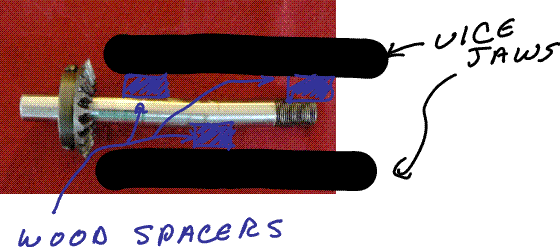Restoring a 1950 Martin 60 Outboard
When I was about 7 (in about 1959), I vividly recall fishing with my Grandfather on Lake Winnebago in Wisconsin. Grandpa used an aluminum 14' Aqua Queen boat powered by a Martin 60 outboard. I recall that I was really impressed with the motor and loved to ride in the "fast" boat!
20 years later, my Grandfather offered the Martin to me. It was a bit weather beaten and well used but I thought some day, I might try to fix it up. He had replaced the Martin with a 1966 Evinrude 6 hp, and said the Martin still ran -- but that it needed some work. My intentions were good, but my progress was slow until I happened across the Antique Outboard Motor Club and realized parts and support were available to try and restore it. Anyway, this year (2006) I began.
Here is a short video to see the new and old Martin:
Here is a picture of the tank to give you an idea as to the condition (which was really pretty good):
The Martin 60 undergoing dis-assembly. Before starting the tear down, I test ran the motor and found it ran fairly well, but vibrated badly. Since the motor had excellent compression, and ran well, I did not tear down the powerhead. All other parts were removed, cleaned, painted and repaired. New condensers were used, but original points, coils and plug wires were retained. Larson Outboard (martinoutboards.com ) had all the new parts that were needed.
Vibration problem -- Found!
While I worked, I wondered about the cause of the vibration. While trying to remove the water pump eccentric, I found the problem -- a badly bent prop shaft -- guess there were some rocks in Lake Winnebago! It took some doing (and a bearing puller) to remove the water pump eccentric.
The bent shaft
Straightening the Shaft -- on the cheap!

I was initially at a loss for how to straighten the shaft and there is no machine shop in our small town. However, after giving it some thought, I tried the arrangement shown above where I used oak spacers and my vice to try and straighten thing out. This actually worked great! By placing the spacers as shown, I was able to apply pressure on the shaft and slowly remove the bend as measured by a steel rule. Surprisingly, this repair has worked out well in operation, so I guess I got it straight enough.
Restoration Completed
After this problem was solved, the restoration of the motor went well and I enjoyed completing it. I found that Rustoleum Hammered Silver paint was a very close match for the original color and that with some wet sanding I could get the metal tank and covers to look like new. I also gained a real appreciation for the design of the Martin. It has a special adjustment (between the transom clamps) that allows the motor thrust angle to adjusted (a manual version of power trim). Plus, you can tilt the motor up and actually swivel it so that the prop can be moved into the boat. Makes shear pin changing a breeze. Neat engineering from 1950!
I was really delighted to carefully position the new decals and carefully put the motor in the test tank. I used the special "prime" function on the carb and was pleased to have it fire up and run great! Very smooth and powerful -- just like I recalled from almost 50 years ago!
The Martin showing some oil residue from a successful test in the test tank!
On June 28, 2006 the Martin got its first run in a lake in well over 35 years. I tried it on a small skiff and had a wonderful ride of about 4 miles. Motor ran great, did not overheat and was a real blast to use. I especially enjoyed the comments from on-lookers who said they had never seen a motor like it.
Feel free to shoot me an email if you have any questions or comments -- rick.christoph@gmail.com